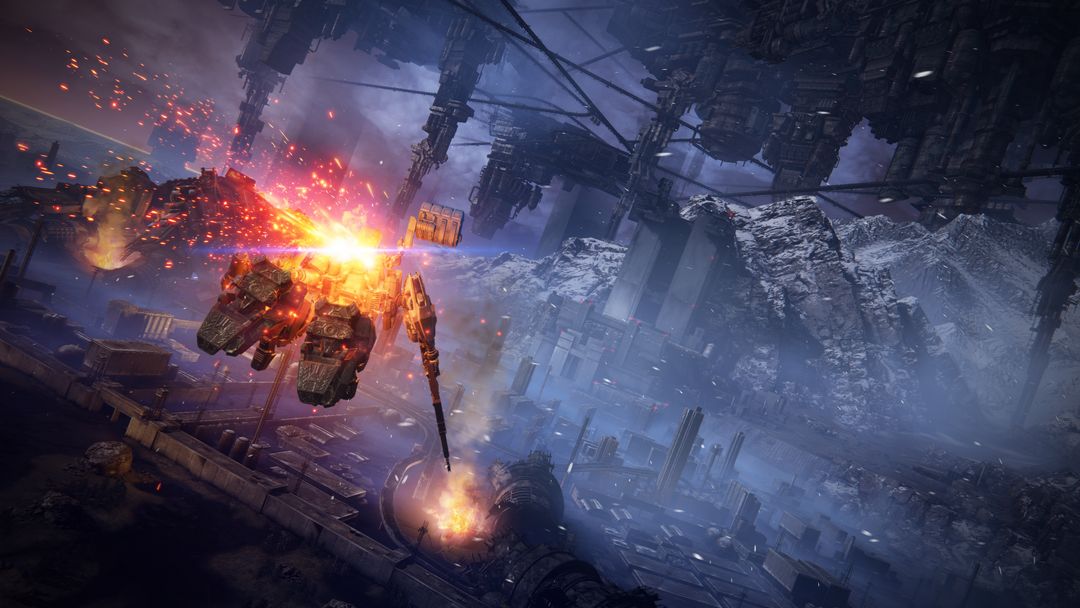
Armored Core 6 is almost here.
Tucked away in a suitably urban cyberpunk-esque bunker in London, I got a few hours of hands-on time with FromSoftware's upcoming Armored Core 6: Fires of Rubicon on a high-end gaming PC. Despite previous experience with Dark Souls and Elden Ring, I can safely say that I was not prepared for Armored Core VI. I can also safely say that I'm an instant convert.
Armored Core VI is shaping up incredibly nicely, and is gunning for an Aug. 25, 2023 launch on Xbox Series X|S, Windows PC, and PS5. I find myself thinking about my experiences with the title constantly, while also exploring how I can get access to previous games and researching the universe's surprisingly deep lore.
Armored Core fans have been waiting an incredibly long time for this title. FromSoftware has transformed itself on the backs of games like Dark Souls, Sekiro, and Elden Ring. But once upon a time, Armored Core was the company's bread and butter. Armored Core has gone through over a dozen iterations throughout the years, and Fire of Rubicon hopes to introduce the legendary franchise to a new audience — while also meeting the expectations of long-time Armored Core fans, and more recent FromSoftware fans. A herculean task, perhaps. So far, though, it looks like FromSoftware has nailed it.
This is Armored Core 6: Fires of Rubicon, and will likely be one of 2023's best Xbox games and best PC games.
FromSoftware, but far from souls-like
Let's not beat around the bush here. FromSoftware games are known for their firm-but-fair approach to difficulty, and Armored Core VI is absolutely no exception. This is the first time I've done a preview for a FromSoftware game, and in other events I've attended like this, developers often bend over backwards to give the journalists and content creators in attendance tips and tricks to ease their way into the game they're supposed to be covering. Some games even go as far as to add special difficulty modes for attendees. That was very much not the case here.
After a brief explanation for Armored Core VI's vision, FromSoftware sent us away to figure things out for ourselves, right in at the deep end. It was quite clear from discussions with others at the event that this game is once again going to drum up "difficulty" debates in FromSoftware games. However, I'm pleased to report that much like other recent FromSoftware games, it's incredibly fair, giving curious players the tools they need to overcome any challenge dished out. Armored Core VI is not a souls-like, but it retains that puzzle-like DNA the studio is known for, rewarding active engagement with the game's systems, while punishing those who try to sleepwalk through its obstacles.
Armored Core VI does not have Elden Ring's sprawling open world or Dark Souls' intricate interconnected map. Instead, Armored Core VI uses a mission-based structure, pitting players in bespoke arenas and levels that push the story forward. You're not overly punished for failing or dying. There are no "souls" to track and recover, and its levels even come with checkpoints now. Similar to other games in the franchise, difficulty in Armored Core VI revolves around figuring out the right tools for the job, the correct strategies for the battle, and the weaknesses of your opponents. It does bring across some inspiration from titles like Sekiro and Elden Ring that injects a sense of modernity into proceedings, but it does so in a way that doesn't trample on the franchise's legacy.
It's only since playing Armored Core VI that I went back and experienced some of the franchise's older titles to gain a better understanding of where the series had come from. I'm grateful for the lengthy gap of time between my hands-on demo and this embargo date for that, and I think this preview will be better for it. I do find myself wondering how others in my group found the game since it did seem like Armored Core VI had generated some frustration. Despite having not played Armored Core prior to this, some of my experiences with familiar games — not souls-likes — seemed to help me ease into it more quickly. More on that in the next section.
Armored Core VI's development has been led by Masaru Yamamura, who built Sekiro. Some influences clearly made their way across, including the ability to stagger enemies into vulnerable states, alongside unique setpiece boss battles of various shapes and sizes. Set on a planet known as Rubicon 3, Armored Core VI revolves around a battle over a new energy source, known as "Coral." You'll pilot your very own Armored Core unit through perilous missions as a mercenary, with rival corporations battling over your support.
For our demo, we experienced the game's first chapter, which serves as a trial-by-fire tutorial to some degree. It sets the stage for Armored Core's bitter and hostile inter-planetary corporate warfare, complete with a tantalizing taste of just how much further Armored Core VI is going to go compared to its tech-limited predecessors.
A mechanized combat puzzle gauntlet
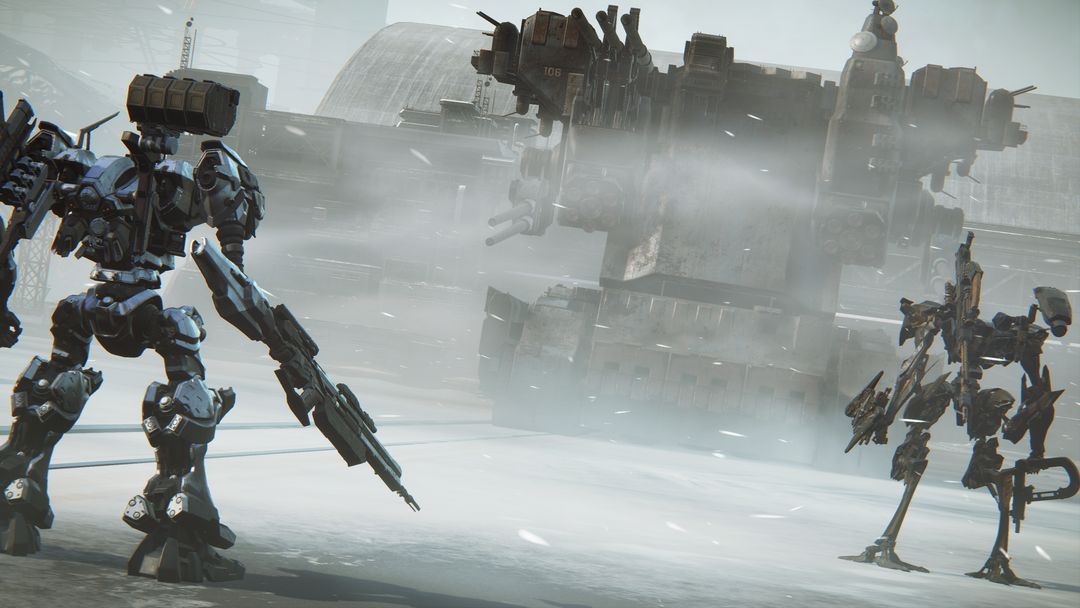
Our demonstration of Armored Core 6 spanned around 2-3 hours and offered a glimpse at some of the game's early tutorial-style missions as part of Chapter 1. Rubicon is a bleak world, decimated by accidents from its Coral extraction process. Absolutely gargantuan mining facilities, ruined mega-machines, and abandoned colonies dot the landscape, as corporations seek to reignite the coral harvesting operation.
As an augmented human merc, handled by the mysterious broker Walter, you're pretty much thrown headfirst into the deep end of a brewing conflict over the potent new resource. Various factions are battling over the Coral, and while some welcome your arrival, many more absolutely do not. Even in our relatively brief demo, the variety of threats was awe-inspiring.
Despite the advantages good gear and tactics can give you, your personal skill remains absolutely key to victory.
Absolutely gigantic town-sized AT-AT-inspired walkers; massive tanks covered in missile launchers; mecha of all shapes and sizes — across a few missions, Armored Core 6 offered an impressive spread of relatively bite-sized mission types, leaving me eager for more. Each mission was anywhere between 5 and 20 minutes long, making it a great game for snappy sessions or long bursts of combat-heavy, satisfying grinding sessions as you hunt down credits for its lucrative upgrades — upgrades the game utterly revolves around.
The mission-based structure in Armored Core 6 essentially encourages you to bring the right loadout for the job. You can store loadouts in the garage for instant re-use, allowing you to quickly adapt to the challenge at hand. Some bosses may be better suited for a heavier mech with shield capabilities. Others may be resistant to missiles. Some may require a faster targeting system upgrade, and so on. Hunting down these unlocks will make up the, erm, core of Armored Core's progression system and approach to prep. Despite the advantages good gear and tactics can give you, your personal skill remains absolutely key to victory.
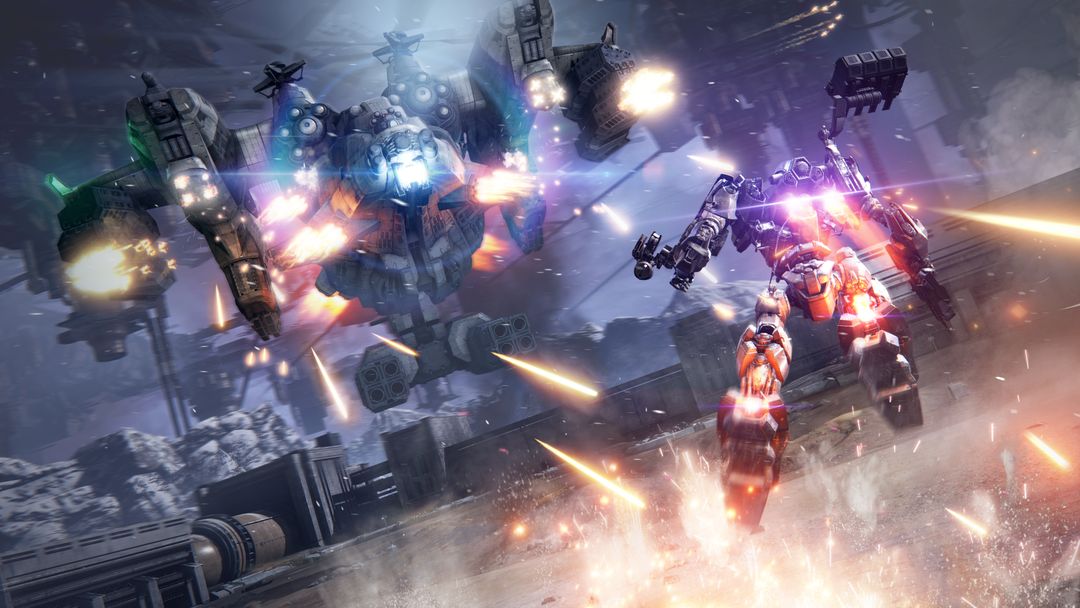
Armored Core 6 gives players a huge variety of freedom for approaching combat. The developers explained that while Dark Souls and Elden Ring are quite horizontal in their approaches, Armored Core 6 is omnidirectional, rewarding players who are able to take advantage of flight. The drawback is that the controls are quite complex as a trade-off. I was desperate to get my Xbox Elite Controller back with its back pedals, knowing how much easier it would be to control flight and movement without having to move my thumbs from the joysticks.
Armored Core 6 modernizes some aspects of its gameplay over earlier versions. There's a hard-lock system for targeting now, but some of your weapon systems' soft-lock auto-targeting is still subject to upgrades and stats, for example. Managing your energy levels efficiently while designing your loadouts — and also actively in combat — is paramount, and will trip up players who aren't thoughtful about how these systems interact.
For example, one mission tasked me to destroy a Juggernaut tank, which rebels had been using to fend off corporate entities trying to take control of the planet. This tank was absolutely huge, and could quite easily one-hit-kill my little mech as if it were an ant underfoot. However, its turning circle was pretty sluggish, and most of its armor was front-loaded, making it incredibly vulnerable from the back.
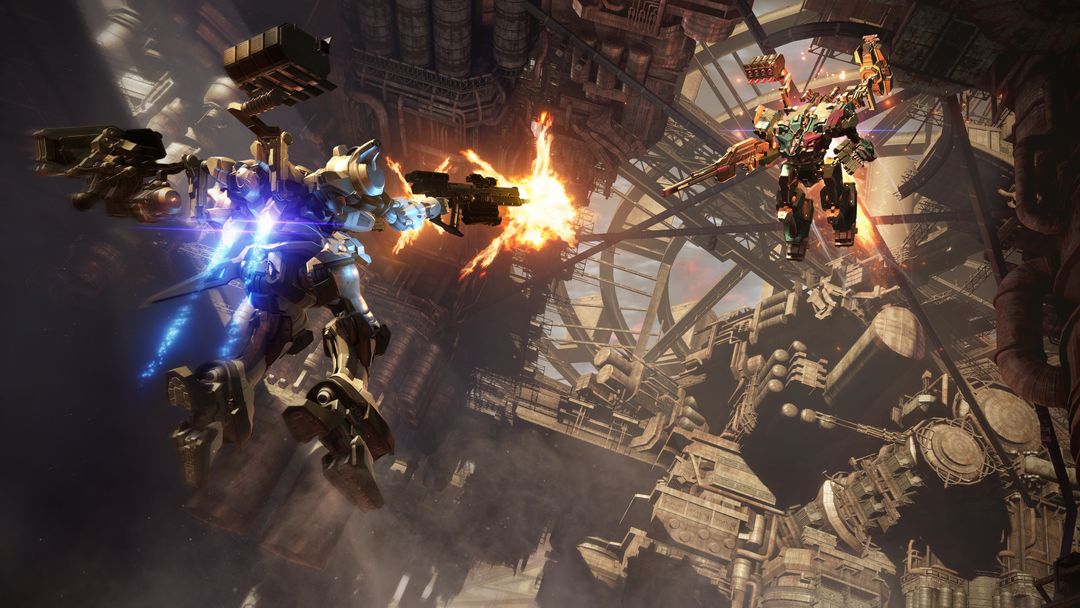
My Elite Dangerous brain kicked in while attempting this fight, which is probably the first real boss that might trip players unfamiliar to this kind of genre. There are loadouts that simply will straight up not be suitable for battling this bot, but like most FromSoftware games, the tools are available to the player.
Through the game's garage system, I was able to grind a few credits on side missions and pick up a booster upgrade, allowing me to fly for elongated periods of time. Reducing my weight a bit by sacrificing armor meant that I was now able to fly for much, much longer periods of time. The tank was extremely vulnerable from the roof and in the back, making it far easier to land that crucial (and incredibly cathartic) Sekiro-like stagger. Staggered enemies take double damage during the stun duration, letting you unleash your most powerful attacks with few repercussions.
I'm making the fight sound less complex overall than it was. The tank still relentlessly tried to ram my mech, and had its own missile barrages that were now utterly crucial for me to dodge, since I'd dropped my armor capacity and the combat arena had absolutely no cover that I could find. Ensuring I had enough energy left to maintain boosts to avoid those missiles, while also hovering above the tank to deal damage made the fight incredibly stressful at times, but never impossible. That tension was rewarded with incredibly epic, ramping music, the subsequent deliverance of the victory screen, and all the juicy credits awarded for a job well done. And this was one of the easy bosses.
As my time with the game came to an end, I finally came against the Chapter 1 finale boss. It decimated me in a hailstorm of missiles, carving me into hellish fractals. This machine made it unashamedly apparent that my build was inadequate, and my tactics were lacking. That I sucked.
I'll steel myself. I can't wait to jump back into the full game.
FromSoftware returns to its core
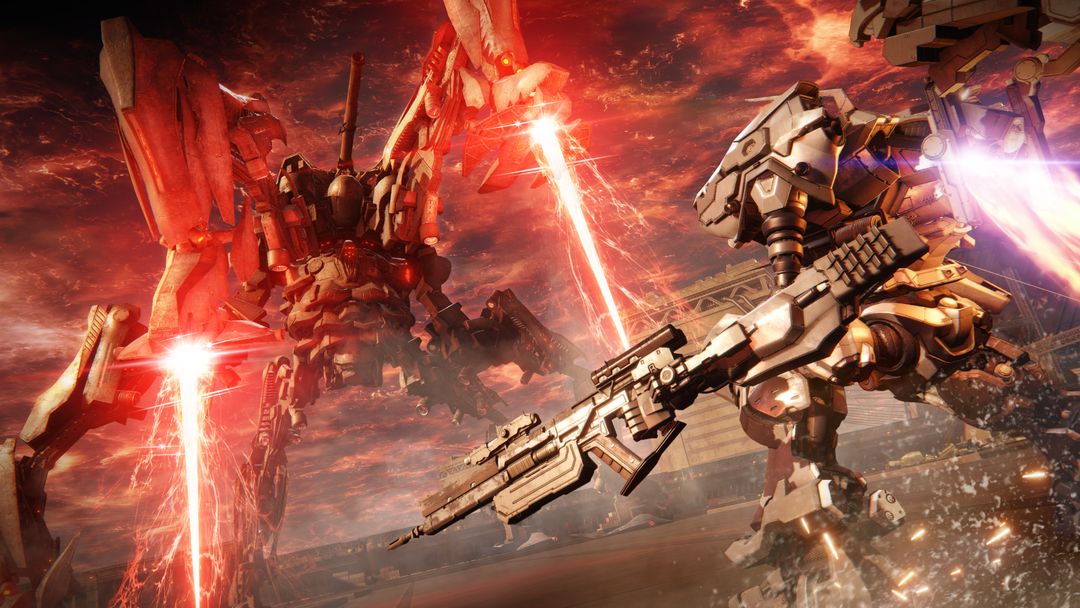
Given FromSoftware's legendary franchises like Elden Ring and Dark Souls, it will be difficult for Armored Core to escape some comparisons, sarcastic or serious. Truthfully though, it really isn't a souls-like — but it carries FromSoftware's deep appreciation for players who desire Antikytherean combat puzzles using the carefully-crafted tools provided. Armored Core might be a great entry point for those who want to explore FromSoftware-style game design sensibilities, without investing tons of time exploring a massive map, with smaller bite-sized arenas and mission lengths that can be enjoyed in an almost piecemeal kind of way. I loved Armored Core 6 for that structure, and I hope you will too.
Armored Core 6 was just utterly satisfying to play. I can't help but feel like it will handle better on controllers with back pedals or on PC with a mouse and keyboard, but adapting to its demanding piloting made me feel like a badass with missile launchers in hand. Staggering a helicopter out of the sky only to carve it up with my massive laser blade and felling repurposed Mad Maxian mining equipment, while being teased by the first phases of Armored Core 6's intriguing dystopic plot — this is very much my kind of game. I hope what I saw was a fair representative of the full experience because right now... I'm steeled and restless. See you on Rubicon 3.
Armored Core 6 launches on Aug. 25, 2023, for Xbox Series X|S, PlayStation 5, and Windows PC, and is now available to preorder.







